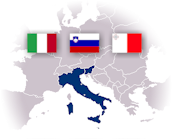Synonyms: Eng; CD105; AI528660; AI662476; S-endoglin


Reactivity
Mouse
Source / Host
Insect cells
Long Term Storage
Lyophilized samples are stable for greater than six months at -20°C to -70°C. Reconstituted sCD105 should be stored in working aliquots at -20°C.
Description
A DNA sequence encoding the extracellular domain of mouse Endoglin (Met 1 - Gly 581) was expressed in insect cells. Mouse Endoglin is a disulfide-linked homodimeric protein. Based on N-terminal sequence analysis, the primary structure of recombinant mature Endoglin starts at Glu 26. Endoglin has a calculated monomeric molecular mass of 61 kDa but as a result of glycosylation, migrates at approximately 75 - 85 kDa under reducing conditions in SDS-PAGE. Endoglin, also known as CD105, is a Type I integral membrane glycoprotein with a large, disulfide-linked, extracellular region and a short, constitutively phosphorylated, cytoplasmic tail. Two splice variants of human endoglin, the S-endoglin and L-endoglin that differ in the length of their cytoplasmic tails have been identified. Endoglin is highly expressed on vascular endothelial cells, chondrocytes, and syncytiotrophoblasts of term placenta. It is also found on activated monocytes, bone marrow pro-erythroblasts, and leukemic cells of lymphoid and myeloid lineages. Human and mouse endoglin share approximately 70% and 97 % amino acid sequence identity in their extracellular and intracellular domains, respectively. In common with betaglycan (also named TßRIII), a proteoglycan that shares regions of sequence similarity, endoglin is an accessory receptor for the TGF- superfamily ligands. Endoglin does not bind ligands by itself, but does so by associating with a ligand-binding serine/threonine kinase receptor. Endoglin binds TGF-1 and TGF-3 but not TGF-2 efficiently by associating with TGF- type II receptor (TßRII). It interacts with activin-A and BMP-7 using either the activin type II or type IIB receptors. In the case of BMP-2 which binds directly to the type I but not the type II BMP receptor, endoglin binds via either BMPR-IA (ALK-3) or BMPR-1B (ALK-6). Although the consequence of endoglin interactions on the functions of TGF- family ligands is poorly understood, endoglin has clearly been shown to be required for angiogenesis and to play a key role in heart development. Mutations in human endoglin or ALK-1 (another type I serine/threonine receptor) lead to the vascular disorder hereditary hemorrhagic telangiectasia (HHT). Mice heterozygous for endoglin have been developed as disease models for HHT. Endoglin has been shown to be a powerful marker of neovascularization. It is also useful as a functional marker that defines long-term repopulating hematopoietic stem cells.
ESCLUSIVAMENTE PER USO DI RICERCA (RUO) e non per uso terapeutico o diagnostico su uomini o animali. Il prodotto NON è un Dispositivo Medico o un Diagnostico in Vitro.
PRODUCT FOR RESEARCH USE ONLY (RUO) and not for therapeutic or diagnostic use on humans or animals. The product is NOT a Medical Device or an In-Vitro Diagnostic (IVD).



